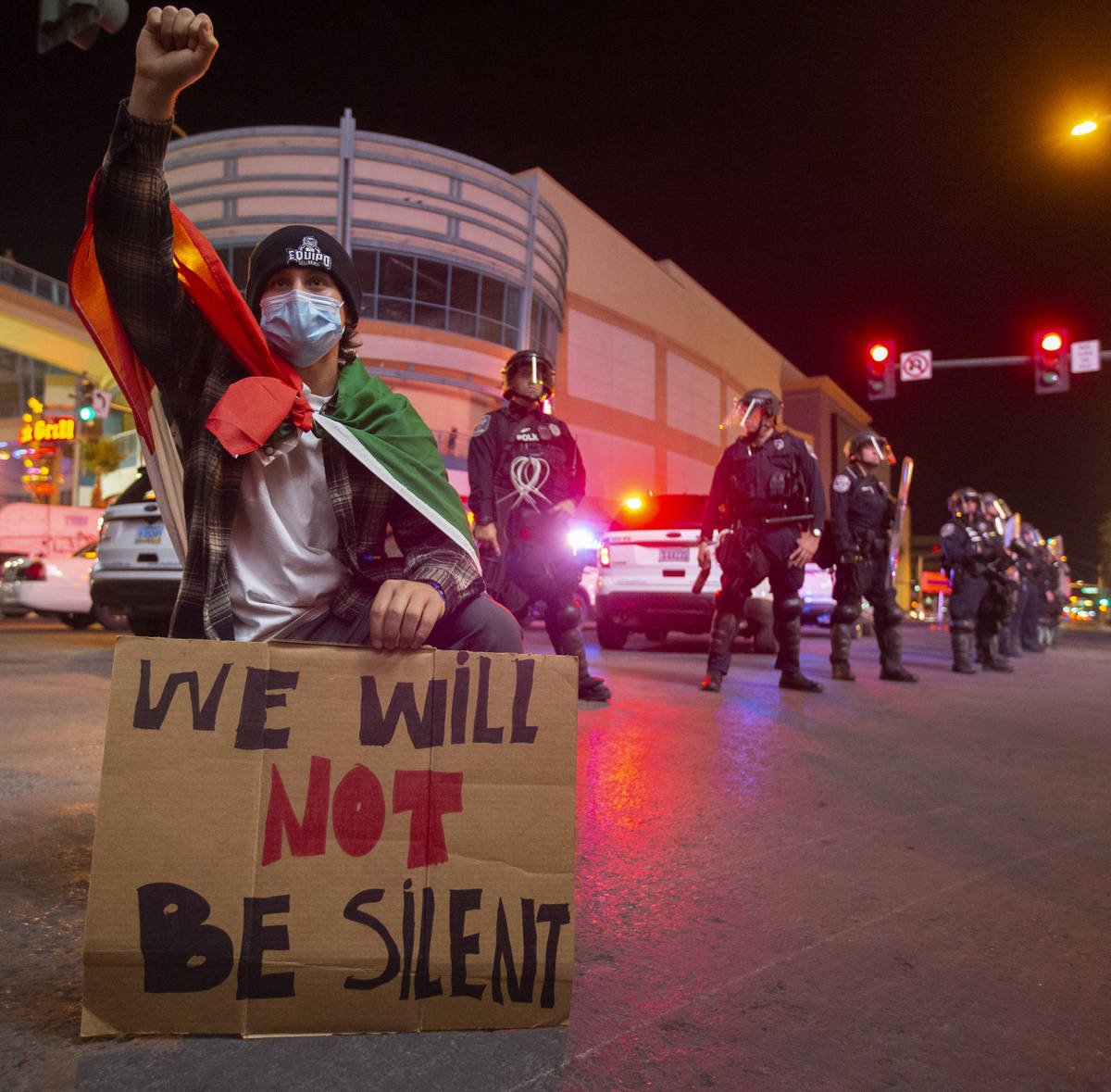Protests heighten virus concern as social distancing, unrest clash
Social distancing and social unrest are at odds as people across the country, including hundreds in Las Vegas, take to the streets to protest the death of George Floyd in police custody in Minneapolis.
The abandonment of social distancing by crowds of protesters raises questions about whether communities will see spikes in coronavirus cases as a result.
“Having a social conscience doesn’t mean you can ignore social distancing,” said Peter Pitts, president of the nonprofit, nonpartisan Center for Medicine in the Public Interest, who believes some increase in cases is inevitable.
“The coronavirus is Public Enemy No. 1,” Pitts, a former associate commissioner with the Food and Drug Administration, said Tuesday. “It believes that no lives matter.”
Many of the protesters are young, which coronavirus data suggests generally puts them at lower risk of becoming seriously ill if they contract the virus. However, if they do become infected, they can spread the illness to people who may be at greater risk of complications from COVID-19.
“I worry for their families, their parents, their grandparents, the people who are at risk for more serious disease,” said Karen Duus, an associate professor of microbiology and immunology at Touro University Nevada in Henderson.
If she weren’t 60 and asthmatic, Duus said she might have gone to the Strip and protested herself. If she had, she would have worn a mask, as some protesters have done, and tried to maintain social distancing.
She also would now be taking her temperature regularly and trying to isolate herself from the rest of her family, in case she were to become sick. She would get tested for the coronavirus if she felt ill, and maybe even if she didn’t, because a significant portion of infected people have no symptoms.
“Afterwards, be tested, especially if you have symptoms,” Pitts advised protesters. “But even if you don’t, it’s the prudent thing to do.”
Spike in cases expected
After exposure to the virus, it typically takes between three and 14 days to test positive. It therefore could take a week to 10 days to begin to see an increase in cases.
“The practical reality is we’re going to see a spike in infection rates,” Pitt said. “And unfortunately to date, COVID-19 has been especially destructive in communities of color.”
Many of the protesters are African American, a group that in Clark County makes up about 11 percent of the population but represents almost 16 percent of hospitalizations from COVID-19 and more than 16 percent of deaths, according to data from the Southern Nevada Health District. The county has seen more than 340 deaths and 6,800 cases.
Some of the protesters are “really in pain,” Duus said. “It hurts me to think that they may have exposed themselves to more pain” in the form of the virus.
Wearing a mask and keeping a distance from others may reduce the risk of infection during a protest, as may being outdoors and not staying in any one spot too long.
However, shouting and singing “bring all those (virus) particles out of your lungs,” and into the air for others to breathe in, Duus said.
Tear gas, which has been used by police in Las Vegas and elsewhere during protests, causes coughing, which “if you actually have the virus, that would spread it out” to other people, Duus said.
Tear gas also results in protesters touching their eyes and faces, a behavior that’s been discouraged by public health authorities to avoid spreading the coronavirus.
If protests continue on the Strip as casinos reopen on Thursday, the crowds outdoors will increase, along with the potential for the spread of disease.
“It comes down to more people in the same space means more risk,” said Brian Labus, an assistant professor in UNLV’s School of Public Health and a member of the governor’s medical advisory team. This basic idea has resulted in restrictions on the density of people allowed inside buildings on the Strip and across the state.
However, Labus said, “I haven’t heard of any proposals for restricting the outdoor areas.”
Contact Mary Hynes at mhynes@reviewjournal.com or 702-383-0336. Follow @MaryHynes1 on Twitter.




















































